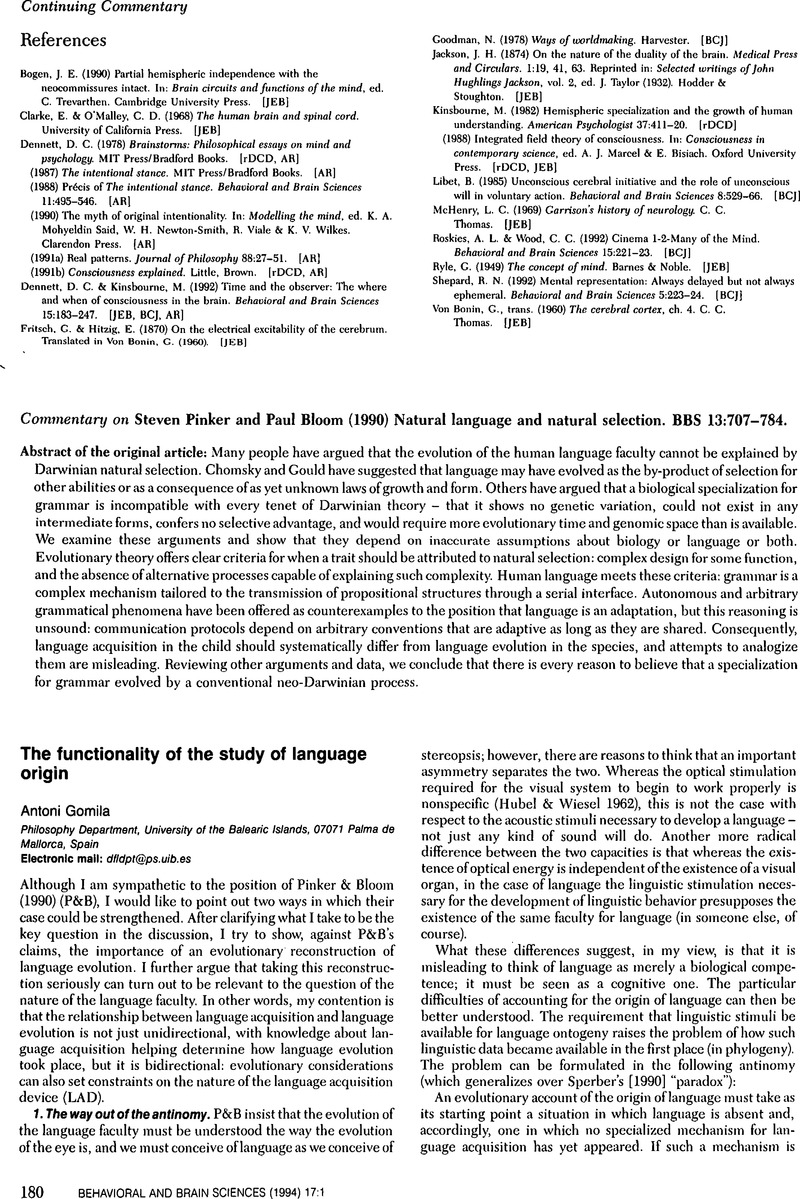Crossref Citations
This article has been cited by the following publications. This list is generated based on data provided by Crossref.
Gomila, Antoni
2006.
Tras la modularitis. Comentario a Enesco y Delval, Módulos, dominios y otros artefactos.
Infancia y Aprendizaje,
Vol. 29,
Issue. 3,
p.
269.





